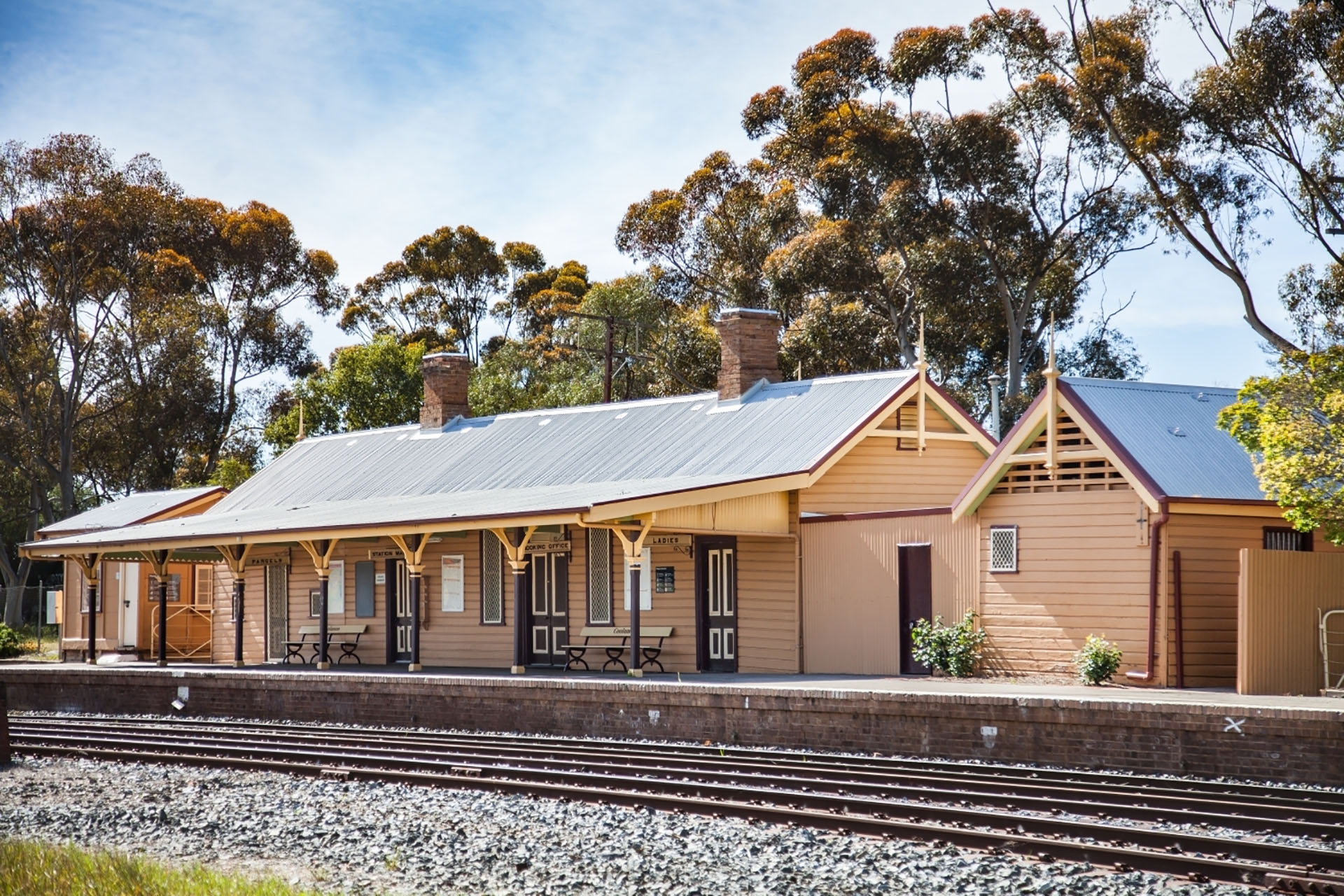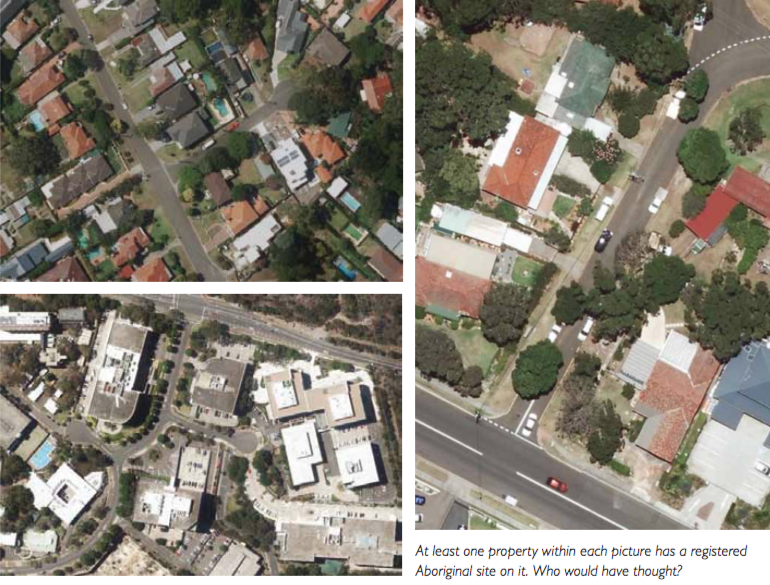I recall during my time as a conveyancer looking at the list of statutory enquiries and wondering under which circumstances I should order one from the Aboriginal Heritage Information Management System (AHIMS). Earlier in my career I was not aware of the effect, if any, that Aboriginal Heritage has on freehold property. The reality is that for both sales and purchases—whether in the middle of Sydney or on a farm in western NSW—a conveyancer should make the effort to determine whether the presence of any Aboriginal object affects the property. This is particularly relevant when any future development regarding ground surface disturbance is anticipated.
Aboriginal Australians, whose presence in Australia well exceeds 45,000 years, occupied many different areas within their traditional ‘country,’ either on a regular, seasonal or transient basis. Aboriginal objects arise from the earlier use of an area by Aboriginal Australians. While there are thousands of Aboriginal objects throughout NSW, many are either recorded inaccurately or not at all. In NSW, Aboriginal objects can be broadly described as follows:
- Aboriginal Places, cultural landscapes and ceremonial or teaching sites;
- Open occupation sites which may contain camping sites, hearths, and Aboriginal shell middens, stone artefacts, engravings and grinding grooves, burials and potential archaeological deposits;
- Closed occupation sites which may be caves or sandstone overhangs that contain rock art, engravings, burials and potential archaeological deposits;
- Less common sites, including mature trees that have been modified by Aboriginal people, Aboriginal rock or ochre quarries, fish traps and earth mounds.
Despite their importance to both Aboriginal people and to the record of Australia’s longer history, very little attention was paid to the recording or destruction of Aboriginal heritage sites until around 30 years ago. Even today, despite advances in Aboriginal Heritage regulation, there is still a general lack of awareness or knowledge about Aboriginal objects and heritage amongst legal, planning, and environmental professionals in both commercial environments and Government sectors.
One might justifiably assume that any applicable Aboriginal Heritage would be disclosed in a S149 certificate. In practice, this is not usually the case. The Conveyancing (Sale of Land) Regulation 2017 (Sch. 3, Prescribed Warranties, Part 1) and Environmental Planning and Assessment Regulation 2000 (Sch. 4, Part (h)) combine to form the vendor warranty that the section 149 certificate specifies the true status of the land, including whether the land contains an item of environmental heritage. However, the reality is that Aboriginal Heritage sites are rarely noted on S149 zoning certificates for a variety of reasons. At best, a Local Council may provide a notation on the S149 certificate disclosing that the property maybe within an area of Aboriginal Heritage sensitivity. The result is that, despite the legislation, neither the conveyancer nor their clients can rely on S149 zoning certificates to disclose whether a property is affected by Aboriginal Heritage.
To complicate the situation further, not all extant Aboriginal objects have been recorded. The following “real life” examples demonstrate the situations that may arise.
Example 1. A registered Aboriginal engraving site exists on an in situ sandstone platform which was, quite logically, being used as part of a driveway surface to a residence. But does the current owner know the site exists? If they do, would they think to disclose it to their conveyancer when selling? Although Council is aware of the site, it would not automatically be listed on the S149 zoning certificate. How, then, would a Purchaser know there is an Aboriginal object on the property? The structure on the property is fairly old and the site provides great views. One could reasonably assume that a subsequent owner would sooner or later demolish and redevelop. However, an owner would not learn of the existence of the Aboriginal site until they lodge their development application with Council unless their conveyancer has performed an Aboriginal Heritage Information Management System (AHIMS) registered site search.
Example 2. During a recent widening of a public road, an archaeological survey of the route resulted in the recording of a large, previously unknown Aboriginal shell midden site on a freehold property. The property, part of a deceased estate, had been partially resumed for the road widening and the existing residence had been demolished. A short time later, the estate sold the remainder property with the Aboriginal site on it. The new owners happened to be using our site facilities and I took the opportunity to say hello to them and discuss the midden. Not only had the new owners no idea that the Aboriginal site existed, the Local Council had in fact advised them that they could only build in the specific area where the midden was located. I advised the new owners to seek immediate legal advice.
These are only two instances in which a conveyancer might find themselves having to explain why they didn’t undertake an Aboriginal Heritage enquiry.
The main legislation protecting Aboriginal objects in NSW is the National Parks and Wildlife Act 1974 (NP&W Act). The penalties for harming an Aboriginal object in NSW are considerable: up to $555,000 and two year’s imprisonment for individuals and up to $1.1 million for corporations. Not knowing about Aboriginal objects is not an acceptable defence.
Linked to the NP&W Act and its regulations is the Due Diligence Code of Practice for the Protection of Aboriginal Objects in NSW (OEH 2010) (The Due Diligence Code). The Due Diligence Code sets out the reasonable steps or precautions to be undertaken to determine if Aboriginal objects may be present on a property. If adhered to correctly, and Aboriginal objects are harmed, then it can provide a defence to the penalties arising from the harm.
To mitigate any complications arising out of the conveyancing process and the effect of Aboriginal heritage, I would suggest that conveyancers consider taking the steps outlined in the accompanying text boxes ‘On a Sale’ and ‘On a Purchase.’
On a sale
For purposes of disclosure and the answering of requisitions on title, ask the Vendor:
- Are they aware of any Aboriginal heritage sites on or near their property?
- Are there sandstone overhangs, outcrops, or platforms on or close to the property?
- In the case of a rural property, are there any unexplained earth mounds, trees with carved markings, or stone arrangements on the property? Has anyone previously picked up Aboriginal objects on the property?
- Have they conducted a free AHIMS search? Free AHIMS searches are available at http://www.environment.nsw.gov.au/awssapp/. AHIMS is a database that contains records of almost 65,000 Aboriginal sites. Users must register and abide by the terms of the AHIMS licence particularly in regard to disclosure of sites. If the free search reveals the presence of Aboriginal objects within 200 metres of the search area:
- attach this information to the contract for sale; and
- add a special condition disclosing the possible presence of Aboriginal objects on or near the property and stating that a Purchaser should rely on their own enquiries.
(NB The free AHIMS search does not disclose the specific location of the site. However, this information is available under an extensive search for a fee of $60.)
On a purchase
Before exchange:
Ask Purchasers whether they intend to develop any part of the property such that there will be impact upon undeveloped ground surfaces or old mature trees. If so, ask:
- Is the property within 200 metres of any stream order, including small ephemeral creek lines?
- Is the property within a sand dune system or located on a ridge top or headland?
- Is the property located within 200 metres below or above a cliff face?
- Are there sandstone overhangs, outcrops, or platforms on or within 20 metres of the property?
- In the case of a rural property, have they seen any unexplained earth mounds, trees with carved markings, or stone arrangements during their inspections of their property?
If any of these questions are answered in the affirmative, refer the Purchaser to the Due Diligence Code and advise them that Aboriginal heritage objects may exist on the property. Further investigation should be undertaken by the Purchaser before they enter into the contract.
After exchange:
- Conduct a free Aboriginal Heritage Information Management System (AHIMS) search over the property (at http://www.environment.nsw.gov.au/awssapp/) or order such a search in your statutory enquiries.
- Add a requisition with the question, “Do any Aboriginal objects exist on or near the property.”



At least one property within each picture has a registered Aboriginal site on it. Who would have thought?
Written by
Viki Gordon, a consultant archaeologist with Advitech Environmental Pty Ltd, was a Licenced Conveyancer for nearly 20 years. Viki offers her ideas for Licenced Conveyancers regarding the impact of Aboriginal Heritage on property transactions.
Disclaimer: The author of this article is not a Legal Practitioner, and this article is not legal advice. Independent legal advice should always be sought.





